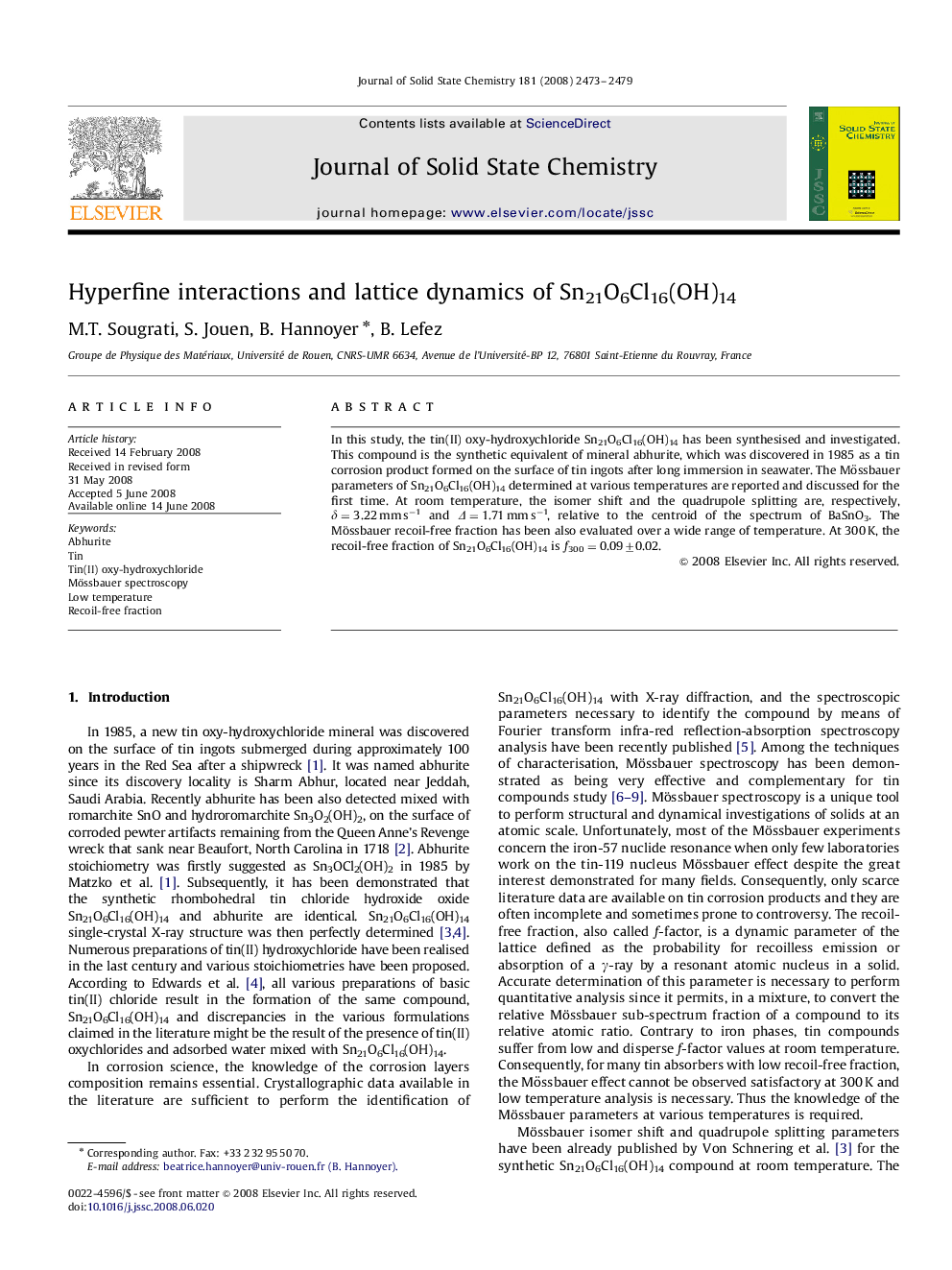| Article ID | Journal | Published Year | Pages | File Type |
|---|---|---|---|---|
| 1332751 | Journal of Solid State Chemistry | 2008 | 7 Pages |
In this study, the tin(II) oxy-hydroxychloride Sn21O6Cl16(OH)14 has been synthesised and investigated. This compound is the synthetic equivalent of mineral abhurite, which was discovered in 1985 as a tin corrosion product formed on the surface of tin ingots after long immersion in seawater. The Mössbauer parameters of Sn21O6Cl16(OH)14 determined at various temperatures are reported and discussed for the first time. At room temperature, the isomer shift and the quadrupole splitting are, respectively, δ=3.22 mm s−1 and Δ=1.71 mm s−1, relative to the centroid of the spectrum of BaSnO3. The Mössbauer recoil-free fraction has been also evaluated over a wide range of temperature. At 300 K, the recoil-free fraction of Sn21O6Cl16(OH)14 is f300=0.09±0.02.
Graphical abstractIn this study, the tin(II) oxy-hydroxychloride Sn21O6Cl16(OH)14 has been synthesised. The Mössbauer parameters determined at various temperatures are reported and discussed for the first time. At room temperature, the isomer shift and the quadrupole splitting of Sn21O6Cl16(OH)14 are, respectively, δ=3.22 mm s−1 and Δ=1.71 mm s−1 and the recoil-free fraction at 300 K is f300=0.09±0.02.Figure optionsDownload full-size imageDownload as PowerPoint slide
